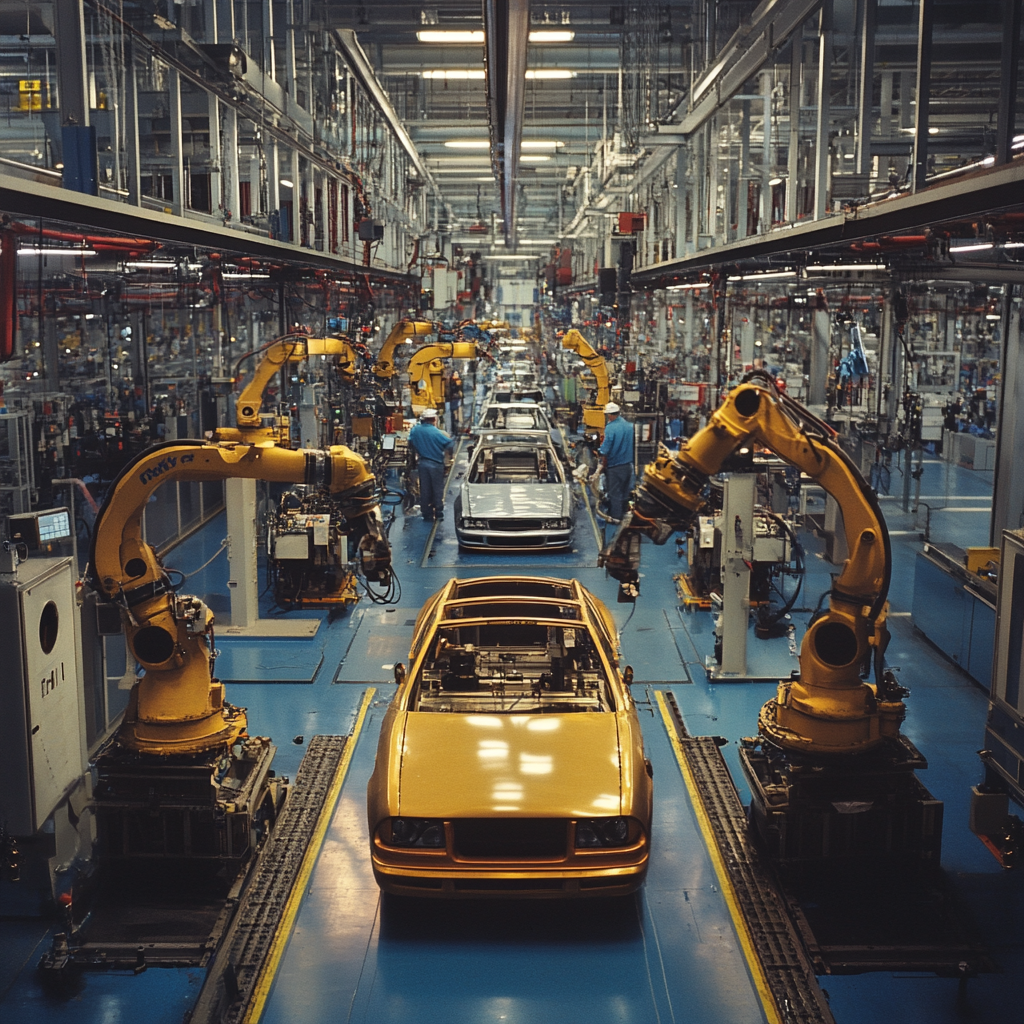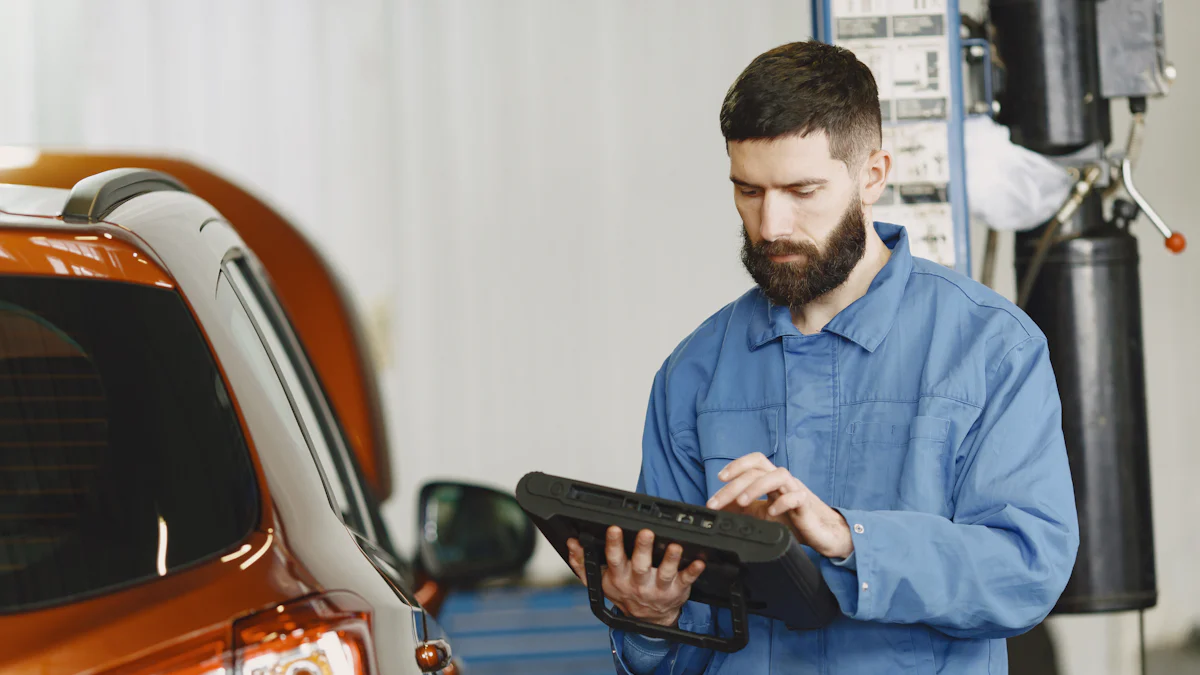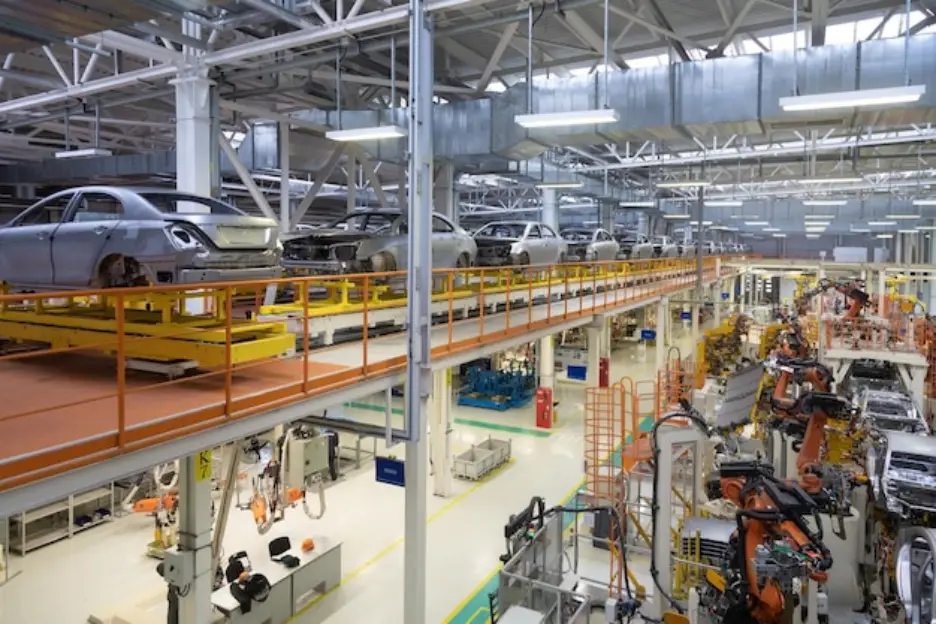Understanding Automotive Appearance Inspection Techniques

Ensuring the quality of a vehicle's exterior plays a vital role in maintaining its reliability and safety. Automotive appearance inspection helps you identify defects like scratches, dents, or misaligned parts that could compromise the vehicle's integrity. These inspections not only uphold stringent regulatory standards but also enhance customer satisfaction by delivering flawless products. With high production volumes and the need for precision, effective inspection methods ensure consistency while minimizing downtime. By prioritizing appearance, manufacturers protect their brand reputation and meet the growing demand for reliable and aesthetically pleasing vehicles.
What Is Automotive Appearance Inspection?
Automotive appearance inspection involves a detailed evaluation of a vehicle's exterior to ensure it meets quality standards. This process focuses on identifying imperfections such as dents, scratches, uneven paint, or misaligned components. By addressing these issues, manufacturers can maintain the aesthetic appeal and structural integrity of their vehicles.
You might wonder why this inspection is so crucial. The answer lies in its ability to uphold both customer satisfaction and brand reputation. A flawless exterior not only enhances the visual appeal of a car but also reflects the manufacturer's commitment to quality. When you purchase a vehicle, you expect it to look perfect, free from any visible defects. Automotive appearance inspection ensures that this expectation is met.
Traditional inspection methods often relied on manual checks performed by trained inspectors. These methods, while effective to some extent, had limitations. Human error, inconsistent results, and slower processing times posed challenges, especially with the increasing demand for vehicles. Today, advanced technologies have revolutionized this process. Automated systems, such as vision inspection systems, provide faster and more accurate results. They use high-resolution cameras and algorithms to detect even the smallest defects, ensuring consistent quality across all vehicles.
Modern inspection software applications further enhance this process. They eliminate the need for manual data entry and provide real-time analysis. This reduces the risk of errors and allows manufacturers to address issues immediately. For example, if a paint defect is detected, the system can flag it instantly, preventing the vehicle from moving further down the production line.
Key Techniques for Automotive Appearance Inspection
Automotive appearance inspection relies on a variety of techniques to ensure vehicles meet the highest quality standards. These methods focus on identifying imperfections in automotive parts inspections, such as scratches, dents, or uneven paint, that could affect the vehicle's overall appeal and functionality. By using advanced tools and methodologies, you can achieve precise and efficient results.
1. Manual Visual Inspection
Manual visual inspection remains one of the most traditional yet effective techniques. Inspectors use their trained eyes to detect visible defects on a vehicle's surface. This method works well for identifying large or obvious issues, such as dents or scratches. However, it requires skilled personnel and can be time-consuming, especially when inspecting high production volumes.
"Visual inspection is widely used in non-destructive testing methods to identify defects like cracks, dents, scratches, corrosion, and anomalies." - MFE Inspection Services
2. Automated Vision Systems
Automated vision systems have revolutionized automotive parts inspections. These systems use high-resolution cameras and machine learning algorithms to detect even the smallest defects. For example, they can identify subtle paint inconsistencies or misaligned components that might escape the human eye. Automated systems also provide faster results, making them ideal for large-scale production lines.
3. 3D Scanning and Imaging
3D scanning technology offers a detailed view of a vehicle's exterior. This technique captures the shape, texture, and dimensions of automotive parts, allowing you to identify structural defects or surface irregularities. It ensures a higher level of precision compared to traditional methods.
4. Augmented Reality (AR) for Defect Visualization
Augmented reality enhances the inspection process by overlaying digital information onto the physical vehicle. AR tools help you visualize defects more clearly, making it easier to assess their severity and determine the necessary corrective actions. This innovative approach improves accuracy and reduces inspection time.
5. Paint Thickness Measurement
Measuring paint thickness is crucial for maintaining consistency and quality. Specialized tools assess whether the paint has been applied evenly across the vehicle's surface. Uneven paint can lead to aesthetic issues and compromise the vehicle's durability.
6. Surface Gloss and Color Consistency Analysis
Gloss meters and color analysis tools evaluate the uniformity of a vehicle's finish. These techniques ensure that the paint's gloss level and color match the manufacturer's specifications. Consistent appearance enhances the vehicle's visual appeal and customer satisfaction.
By combining these techniques, you can conduct thorough automotive appearance inspections that meet industry standards. Advanced technologies, such as automated vision systems and AR tools, not only improve accuracy but also streamline the inspection process. These methods help you maintain the quality and reliability of your vehicles while addressing the challenges of high production volumes and precision requirements.
Tools and Equipment for Effective Inspections

To ensure precise and efficient automotive appearance inspections, you need advanced tools and technologies. These tools not only enhance accuracy but also streamline the inspection process, making it easier to detect defects and maintain high-quality standards.
Automated Tools
Robotic Inspection Arms
Robotic inspection arms have transformed the way you approach automated visual inspection. These arms, equipped with vision systems and AI-enabled guidance, can maneuver cameras around vehicles to capture detailed images of their surfaces. They adapt to varied object placements, ensuring consistent results even with high part variability. By using force-sensing technology, robotic arms apply the right amount of pressure during inspections, preserving the quality of automotive components while reducing waste. Their ability to operate efficiently in high-output environments makes them indispensable for maintaining quality control.
Vision Systems with AI Integration
Vision systems integrated with AI bring unparalleled precision to automated visual inspection. High-resolution cameras, combined with machine learning algorithms, analyze every detail of a vehicle's exterior. These systems detect subtle defects like paint inconsistencies or misaligned parts that might escape manual inspection. AI integration allows these systems to learn and improve over time, ensuring consistent quality control across all production lines. By using vision systems, you can achieve faster inspections without compromising accuracy, making them ideal for large-scale automotive manufacturing.
Advanced Technologies
3D Scanning and Imaging Systems
3D scanning and imaging systems provide a comprehensive view of a vehicle's exterior. These systems capture the shape, texture, and dimensions of automotive parts, enabling you to identify structural defects and surface irregularities with unmatched precision. By creating detailed digital models, 3D scanning ensures that every aspect of the vehicle meets quality control mechanisms. This technology is particularly useful for inspecting complex shapes and surfaces, where traditional methods might fall short.
Augmented Reality (AR) for Defect Visualization
Augmented reality takes defect visualization to the next level. AR tools overlay digital information onto the physical vehicle, helping you identify and assess defects more effectively. For example, AR can highlight areas with uneven paint or surface inconsistencies, allowing you to determine the severity of the issue and decide on corrective actions. This innovative approach not only improves accuracy but also reduces the time required for inspections, making it a valuable addition to your quality control toolkit.
By leveraging these tools and technologies, you can enhance your automotive appearance inspections and ensure that every vehicle meets the highest standards of quality. Automated visual inspection systems, combined with advanced technologies like 3D scanning and AR, empower you to detect defects efficiently and maintain consistent quality control throughout the production process.
Best Practices for Conducting Automotive Appearance Inspections
Conducting effective automotive appearance inspections requires a structured approach to ensure consistent quality and customer satisfaction. By following these best practices, you can streamline the inspection process and maintain high standards of workmanship.
1. Develop a Comprehensive Inspection Checklist
A well-defined inspection checklist serves as the foundation for thorough evaluations. Include all critical aspects of the vehicle's exterior, such as paint consistency, surface gloss, alignment of components, and the presence of scratches or dents. A detailed checklist ensures that no detail is overlooked during inspections. Regularly update the checklist to reflect new quality standards or changes in manufacturing processes.
"A comprehensive inspection checklist not only improves efficiency but also minimizes the risk of missing defects."
2. Train Inspectors for Consistency
Proper training equips inspectors with the skills needed to identify defects accurately. Focus on teaching them how to use tools effectively and interpret results consistently. Encourage inspectors to follow the inspection checklist meticulously to avoid discrepancies. Skilled inspectors contribute significantly to maintaining the quality of workmanship across all vehicles.
3. Leverage Third-Party Inspections
Third-party inspections provide an unbiased evaluation of your vehicles. These external experts bring fresh perspectives and help identify issues that internal teams might overlook. Incorporating third-party inspections into your quality control process enhances credibility and ensures compliance with industry standards.
4. Use Advanced Tools and Technologies
Invest in modern tools like vision systems, gloss meters, and 3D scanners to improve accuracy. These technologies detect even the smallest imperfections, ensuring that your vehicles meet the highest standards. Automated tools also reduce human error and speed up the inspection process, making them ideal for high-volume production lines.
5. Perform Regular Quality Audits
Schedule periodic audits to assess the effectiveness of your inspection processes. Use these audits to identify areas for improvement and implement corrective actions. Regular evaluations help you maintain consistency and adapt to evolving quality requirements.
6. Prioritize Documentation and Feedback
Document every inspection thoroughly, including the findings and corrective actions taken. Use this data to analyze trends and identify recurring issues. Feedback from inspectors and third-party inspections can guide improvements in your processes and enhance overall quality.
7. Foster a Culture of Quality
Encourage a quality-first mindset among your team. Emphasize the importance of inspections in maintaining customer satisfaction and brand reputation. Recognize and reward efforts that contribute to superior workmanship, motivating your team to uphold high standards.
By implementing these best practices, you can optimize your automotive appearance inspections and deliver vehicles that meet customer expectations. A structured approach, combined with advanced tools and third-party inspections, ensures consistent quality and strengthens your position in the competitive automotive market.
How Machine Vision Enhances Automotive Appearance Inspection

Machine vision systems have revolutionized the way you approach automotive appearance inspections. These systems combine advanced imaging technologies with intelligent algorithms to detect even the smallest defects. By integrating machine vision into your inspection processes, you can achieve higher accuracy, faster results, and improved reliability.
Frame Inspection
Machine vision systems excel in inspecting vehicle frames for structural integrity and alignment. High-resolution cameras capture detailed images of the frame, allowing you to identify defects like cracks, corrosion, or misalignments. These systems use advanced image processing to analyze the captured data and provide precise verification of the frame's condition. For example, a machine vision system can detect minute deformations that might compromise the vehicle's safety. This ensures that every frame meets the required standards before moving further in the production process.
Tire Inspection
Tires play a critical role in a vehicle's performance and safety. Machine vision systems enhance tire inspections by analyzing their surface, tread patterns, and sidewalls. These systems can identify defects such as uneven wear, punctures, or embedded foreign objects. By using high-speed cameras and intelligent algorithms, you can perform real-time verification of tire quality during manufacturing. This not only ensures reliability but also reduces the risk of defective tires reaching the market. For instance, detecting a small puncture early can prevent potential safety hazards for the end user.
Solder Joint Inspection
Modern vehicles rely heavily on electronic components, making solder joint quality crucial for functionality. Machine vision systems inspect solder joints with unparalleled precision. High-resolution imaging captures the shape, size, and position of each joint, enabling you to identify weak or defective connections. These systems ensure that all solder joints meet strict quality standards, reducing the likelihood of electronic failures. For example, a machine vision system can verify the solder joints on an engine control unit, ensuring reliable performance under various conditions.
By incorporating machine vision into your automotive appearance inspections, you can streamline the process and maintain consistent quality. These systems provide accurate defect detection, efficient verification, and enhanced reliability, helping you meet the demands of a competitive automotive market.
Car Paint Inspection
Car paint inspection plays a critical role in ensuring the aesthetic and protective qualities of a vehicle's exterior. This process focuses on identifying imperfections such as scratches, uneven coatings, or color inconsistencies that could compromise the vehicle's appearance and durability. By maintaining high standards during this inspection, you can deliver vehicles that meet customer expectations and industry benchmarks.
Modern technologies have transformed how you approach car paint inspection. Vision systems equipped with high-resolution cameras and machine learning algorithms analyze the paint surface with remarkable precision. These systems detect even the smallest defects, such as micro-scratches or thin paint layers, which might escape manual inspection. For example, a vision system can identify areas where the paint has not adhered properly, ensuring that every vehicle leaves the production line with a flawless finish.
Another advanced tool used in car paint inspection is the gloss meter. This device measures the reflective quality of the paint, helping you ensure uniform gloss levels across the vehicle's surface. Consistent gloss enhances the visual appeal of the car and reflects the manufacturer's commitment to quality. Additionally, color analysis tools verify that the paint matches the specified shade, eliminating discrepancies that could affect the vehicle's overall appearance.
Augmented reality (AR) further enhances the inspection process by overlaying digital information onto the vehicle's surface. AR tools highlight areas with potential defects, making it easier for you to assess their severity and decide on corrective actions. This innovative approach reduces inspection time while improving accuracy, ensuring that no detail is overlooked.
By integrating these advanced technologies into your car paint inspection process, you can achieve higher precision and efficiency. These tools not only enhance the quality of your vehicles but also help you maintain a competitive edge in the automotive industry.
Automotive appearance inspections play a vital role in ensuring the quality and appeal of vehicles. By utilizing techniques like manual visual checks, 3D scanning, and augmented reality, you can identify defects with precision. Advanced tools, such as robotic inspection arms and AI-powered vision systems, enhance efficiency and accuracy. Best practices, including comprehensive checklists and regular audits, further streamline the process. Machine vision systems revolutionize inspections by offering unmatched speed, reliability, and defect detection. These innovations empower you to meet industry standards, maintain customer satisfaction, and uphold your brand's reputation.
See Also
Simplifying Semiconductor Quality Inspection Processes Effectively
An In-Depth Guide to Machine Vision in Automation
